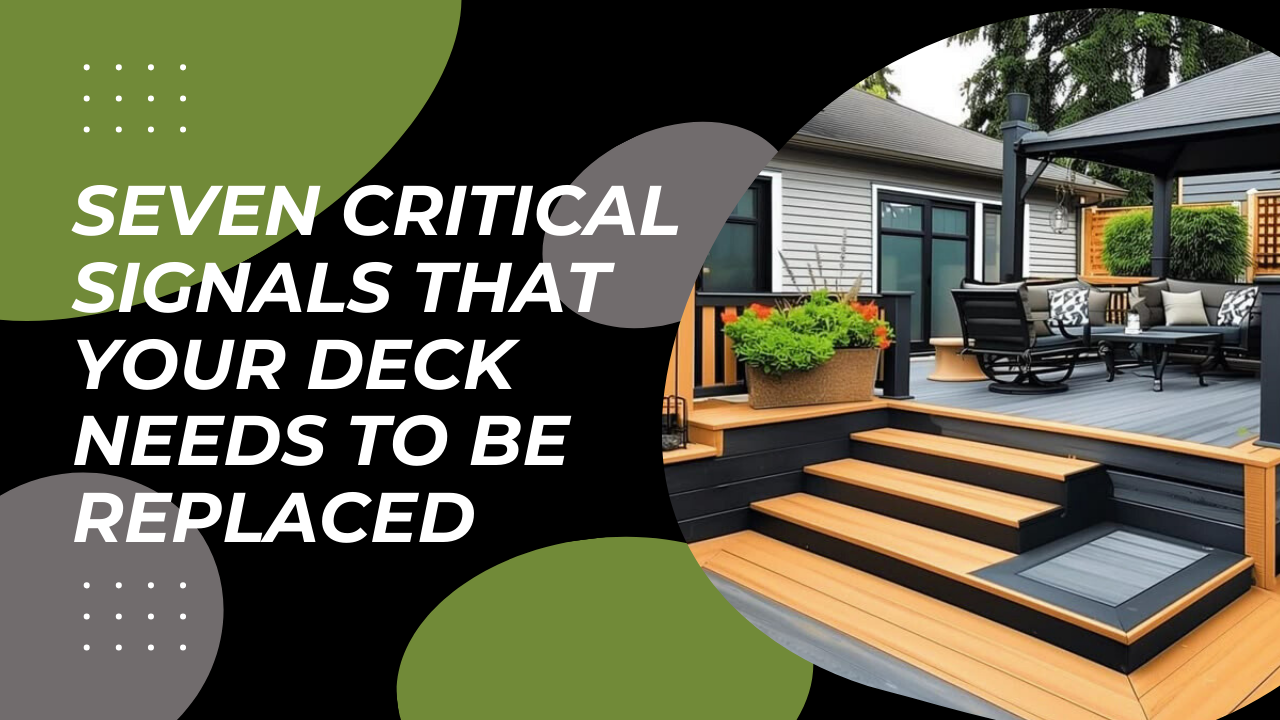Your deck is probably where you spend a lot of time socializing and meditating, therefore it is crucial to maintain it. But after time, wear and tear is unavoidable. Although decks have a rather lengthy lifespan, ultimately they will need to be replaced. A new deck is a wise financial decision for the future because it enhances the appearance and value of a home.
What Is the Typical Deck Lifespan?
A wood deck typically lasts 10 to 15 years. Decks made of composite material have a 25–30 year warranty period. The types of environmental factors, the calibre of the construction materials, and the type of management all affect life expectancy. If the defects are simple wear-related issues, decks can easily be fixed. Have a qualified deck builder evaluate the structure if you have any concerns about the safety of your deck.
Should My Deck Be Repaired or Replaced?
While many faults may be resolved successfully, there are a few serious difficulties that might warrant replacing your deck. Here are several to think about.
- Wood Rot
Wood rot develops over time on all decks. In some instances, boards can be taken out and replaced to fix minor damage. It's time for a replacement when the rot is severe and the entire deck or its supporting structures are harmed.
- Extensive Surface Problems
Twisted, ruptured, or split boards are among the first things you'll notice on a worn deck. When only a few boards are damaged, the deck can be used again after being fixed. Older decks with significant surface damage are typically beyond repair.
- Loose or Unstable Railings
Any deck must have railings as a safety feature. Although loose rails are easily rectified, an unstable railing could point to a more serious issue with the deck that needs to be inspected.
- Ledger Boards Without Security
A deck is secured to your house with ledger boards. When you see these separating, it's very alarming. Unsecured ledger boards are a common feature of decks that are severely damaged or decayed. The best course of action in this situation is to construct a new deck.
- Damaged Posts or Joists
Your deck's joists and posts are crucial to its stability. Spot repairs cannot secure the framework once these boards have too much rot, wear, or damage. This kind of damage puts decks at risk of collapsing.
- Extensive Mold or Water Damage
To keep the aesthetics of your deck in good shape, pressure washes any surface mould and stains. However, the wood becomes weak when the mould has been deeply embedded into the boards. Wood that has been damaged by water will likewise swell and decays. Although treating decks can help prevent these issues, wear and tear eventually catches up with them.
- Termite Infestation
Termites do significant damage if they decimate posts, wooden beams or ledger boards. Visible termite damage indicates that a deck needs inspection and may need to be replaced.
When Should You Replace Your Deck?
Don't risk damaging your deck further by retaining the outdated design. Injuries from a deck collapse may be severe. Employ a qualified builder to construct a new deck so you may use it worry-free for many years to come.
